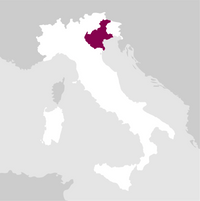Awards
Details

Perfume

Color

Taste
Serve at:
06 - 08 °C.
Longevity:
03 - 05 years

Pairings
- Start up year: 1919
- Oenologist: Primo Franco
- Bottles produced: 1.100.000
But it was the "quiet revolution" of Primo Franco, Antonio’s grandson, that brought the wind of change, opening the doors of the best restaurants in the world to his Valdobbiadene Prosecco wines. Primo bravely crossed the Piave, leaving behind an agricultural world that exclusively evolved around itself.
Primo’s new wave of Prosecco – authorial, intimate and identifying – is the embodiment of his experiences: travels, encounters, meetings with chefs and gastronomes of the Nouvelle Cuisine, studies in enology and passion for architecture, as well as conversations and drinks with friends.
Today, after making history for a century, Nino Franco is the icon of Valdobbiadene Prosecco. While observing the utmost respect for his homeland, he undid – using quality and imagination – all the prejudices against an easy and standardized wine, one considered as an endowment of a rustic and pragmatic culture. Read more


| Name | Nino Franco Valdobbiadene Prosecco Superiore Rustico Brut |
|---|---|
| Type | White charmat method sparkling wine brut |
| Denomination | Conegliano Valdobbiadene Prosecco DOCG |
| Size | 0,75 l |
| Alcohol content | 11.0% by volume |
| Grape varieties | 100% Glera |
| Country | Italy |
| Region | Veneto |
| Vendor | Nino Franco |
| Origin | Valdobbiadene (TV). |
| Wine making | Pressing, destemming, cooling of must and fermentation in steel tanks at controlled temperature. Second fermentation in ”cuve close”. |
| Allergens | Contains sulphites |








